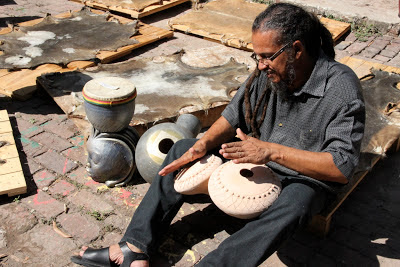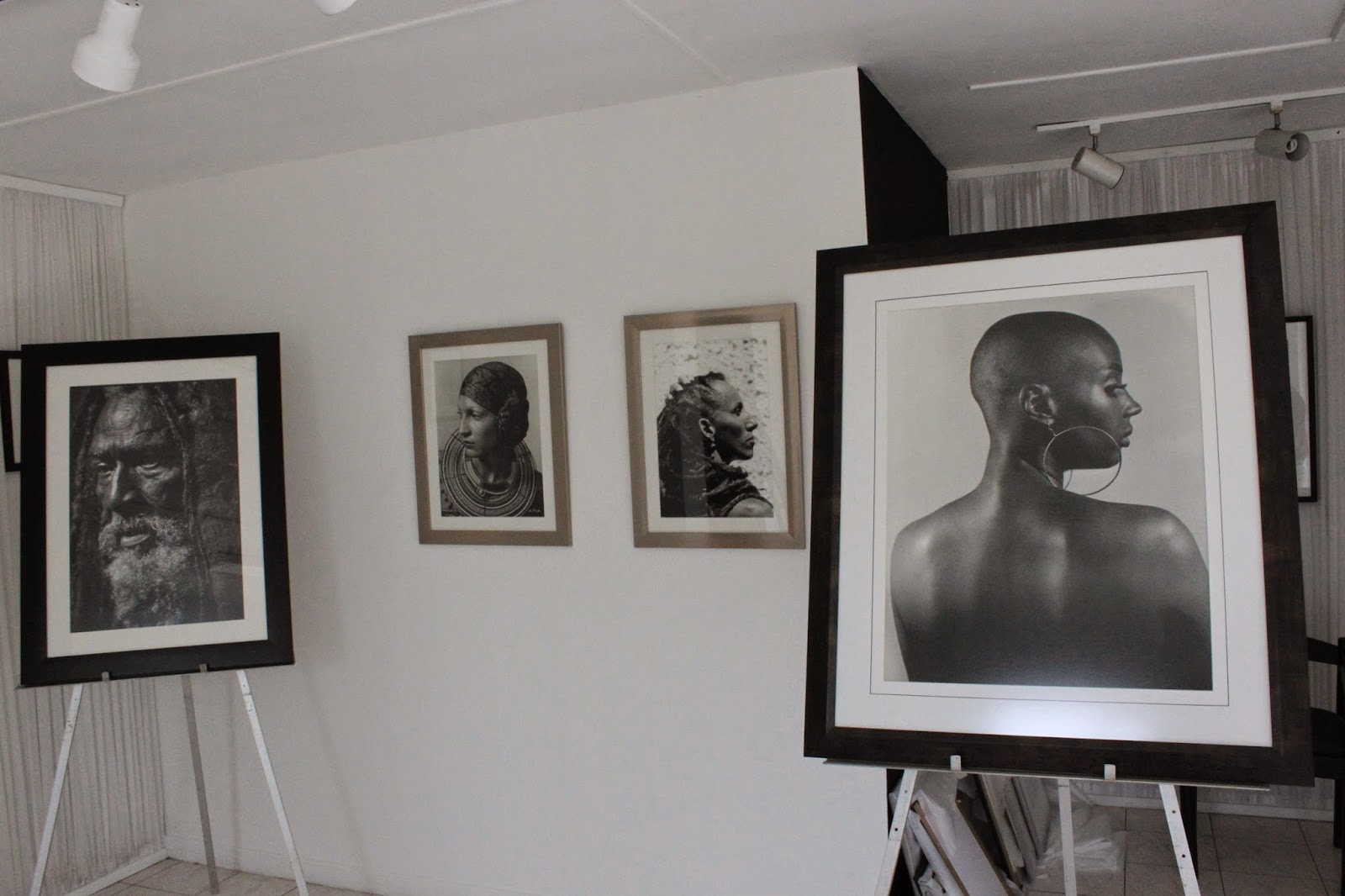Let the drum rolls begin
 |
| Phillip Supersad playing a tune on a ceramic drum |
Sporting the aura of a dreadlocked ascetic of India transcending from the Himalayas ... just that this particular art ascetic descended from the hills of Manchester, clad in denim, engrossed in the drums, Phillip Supersad’s fingers rhythmically hit a tune.
The ceramist, teacher and drummer is living several creative traits.
Surrounded by his tools of trade, Supersad manufactures drums and ceramics in his studio, nestled in a bylane of Fletcher’s Land in downtown Kingston. “The Jamaica School of Arts was in this compound,” he said.
A crumbling great house surrounded by ramshackle structures and a rusting wrought-iron staircase standing testimony to its former glory.
Supersad is a self-taught drum maker, “The materials that I use are 100 per cent recyclable,” he informed.
“I use palette board, which is white and yellow pine used for packing; it is recyclable material. I get goat skin from the butcher or abattoirs. I also use cow skin for the congo (drums) and sheep skin. To cushion the base of the drum, I use old bicycle or motorcycle tyres.”
In his studio, he dabbles with a wide variety of drums, like a magician pulling things out of thin air, Supersad transforms discarded material into pulsating musical instruments.
“We make Djembe, which uses ropes to secure the skin and tune the drum, (which) originated from west Africa, there’s the kette drum and the kumina drum,” he explained.
“I save everything from the raw material,” the ceramic artist said. From the nails hammered to the boards, to the shreds of skin and tyres. “We always find use for them.”
“My interest was whipped up when I was growing up and the Zionists used to play drums next door, I used to peep but was not allowed to go. I had a good feeling.
His interest was further piqued when he was 14, and a friend in school brought a drum and asked him to play.
“I learnt Nyabhingi, somewhere it went into the backburner as I took up pottery and ceramics. I didn’t play drums for 15 years.”
Supersad started grooving with drums again at Edna Manley College for the Visual and Performing Arts, where he teaches pottery. The sound of drumbeats ‘pulled’ him.
“I used to listen to drum sounds at the school of dance; it was infectious.”
decided to create
Supersad says he was yearning to tap his fingers on the drums but couldn’t source any so he decided to use his skillsets to create a ceramic drum. That was at the turn of the millennium, and he hasn’t looked back since.
Like any fine chef, prepping the ingredients for their cuisine, Supersad prepares the raw materials for their musical fare.
After the raw hide is retrieved from the butcher, it is spread in the sun to dry for three to four days. “It is sprayed and fumigated,” he said. “It is not a pretty sight or smell to begin with.”
When the skin is dried out, it is cut into a circular shape.
“The hair is shaved off and the skin soaked in water before being put on the drum, masking tape is used to secure the skin to the base,” Supersad said.
The wooden base is usually in three parts: the top, on which the skin is attached, joined to a conical tapering part below, which is rested on a base. These are glued together, the skin put on and ropes strung to adjust the tension of the skin.
“I adorn the drum with ceramic pieces of art and bells, which might come from the Indian in me,” he explained.
The lifespan of the drum skin varies, depending on the usage. He advises that baby oil or shea butter may be used to keep it supple.
“Sometimes we use white rum,” Supersad said. “When the rum evaporates, the skin becomes tighter.”
He attributes his wide range of creativity to looking beyond the obvious. “I have a lot of genes in me,” there’s Scottish and African, from my mother’s side and Indian from my father’s side ... what does that make me?” he muses.
Supersad says he wants to give back to the community, encouraging youth to come and acquire tangible skills. “I want the youngsters to learn the art of drum making and use their energies positively,” he said.
Over the years, the artist has groomed several apprentices and wishes more youngsters would recognise their culture and spread it across the world.
amitabh.sharma@hotmail.com
Published Sunday Gleaner - October 21, 2012








It is good to know that there are genuine artists like Supersad. They need to come out of the bylanes of down-town Kingston and take the centre stage.
ReplyDelete